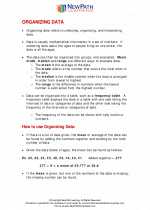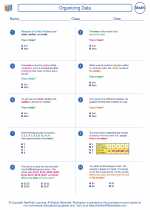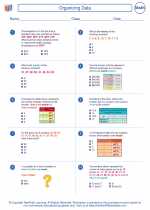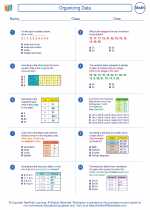Decimals
Decimals are a way of expressing parts of a whole. They are a way of writing fractions with denominators of powers of 10. The decimal point separates the whole number part from the fractional part of a number.
Basic Concepts
Understanding the basic concepts of decimals is crucial. Here are some key points to remember:
- Decimal Place Value: The value of each digit in a decimal number is based on its position from the decimal point. The positions to the left of the decimal point represent whole numbers, while the positions to the right of the decimal point represent fractions of a whole.
- Reading Decimals: Decimals are read as "and" when the decimal point is spoken. For example, 3.25 is read as "three and twenty-five hundredths."
- Comparing Decimals: When comparing decimals, start from the left and compare the digits in each place value. If the digits are the same, move to the next place value until a difference is found.
Operations with Decimals
Performing operations with decimals is an important skill. Here are the basic operations involving decimals:
- Addition and Subtraction: When adding or subtracting decimals, it is important to align the decimal points and then perform the operation as if working with whole numbers. The decimal point in the result should be placed directly below the decimal points in the numbers being added or subtracted.
- Multiplication: To multiply decimals, ignore the decimal points and multiply the numbers as if they were whole numbers. The final answer should have the same number of decimal places as the total number of decimal places in the factors.
- Division: When dividing decimals, first move the decimal point in the divisor to make it a whole number. Then move the decimal point in the dividend the same number of places. Perform the division as if working with whole numbers, and place the decimal point in the quotient directly above the decimal point in the dividend.
Applications
Decimals are used in various real-life applications, such as money, measurements, and scientific notation. Understanding decimals is essential for handling these everyday situations.
Practice Problems
Here are some practice problems to help reinforce your understanding of decimals:
- Perform the following addition: 4.7 + 2.63 = Answer: 7.33
- Calculate the product of 3.25 and 1.6 = Answer: 5.2
- If a person has $35.75 and spends $18.90, how much money does he have left? Answer: $16.85
Practicing these problems will help solidify your understanding of decimals and improve your skills in working with them.
.◂Math Worksheets and Study Guides Seventh Grade. Organizing Data

 Worksheet/Answer key
Worksheet/Answer key
 Worksheet/Answer key
Worksheet/Answer key
 Worksheet/Answer key
Worksheet/Answer key
